Fridays with Fred: yearbooks at Beloit College, from Codex to Gold
On April 27, 1888, the following notice appeared in the “Local” section of the Round Table:
“It is rumored that an Annual will be issued by the college classes next year. It is hoped that this scheme, which has been proposed so many times before will this time be carried out.”
Since 1859, graduating classes had contracted with local photography studios to produce sturdy photograph albums bound in tooled leather and containing carte de visite photographs of campus buildings, the faculty, and senior classes. But apart from autographs and the occasional motto or quote, there was no room for creative expression or literary work. In the late 1880s, when students clamored once again to publish something more substantial and widely distributed than a photograph album, college faculty still held a strongly paternal role in governing student lives. That spring, the sophomore class officers petitioned the faculty, which referred the matter to a committee, which then referred the matter back to the faculty for further consideration. After another round or two of discussion, the faculty voted three to two, with four abstaining, “that the request be granted.” Professors Emerson, Whitney, and Wright formed a committee to keep a fatherly eye on the publication. The class of 1890 appointed editors and set to work.
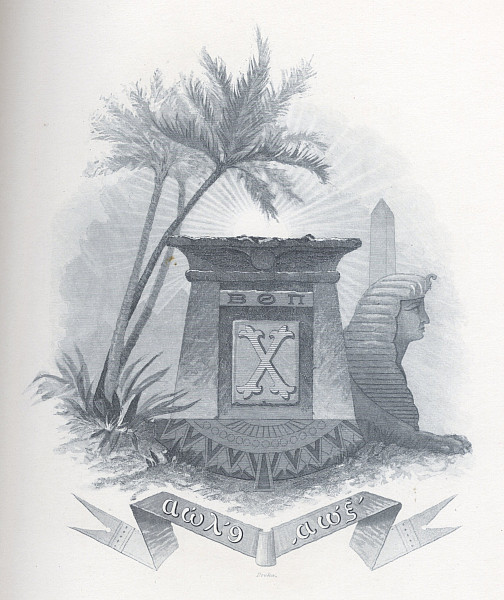
First, in order to ensure the as-yet-unnamed annual’s viability, its business managers wrote hundreds of letters and “postal cards” and sent out “well-nigh a thousand circulars,” the Round Table reported, soliciting both subscriptions and advertisements. Enthusiastic alumni responded with letters of support, financial assistance, and money to advertise their businesses.
By September, the Round Table predicted resounding success. By October, the annual had a name—Codex. The college annual retained that name until 1929, when it changed its name to the Gold, possibly in response to the rise in popularity of the feminine hygiene product, “Kotex.”
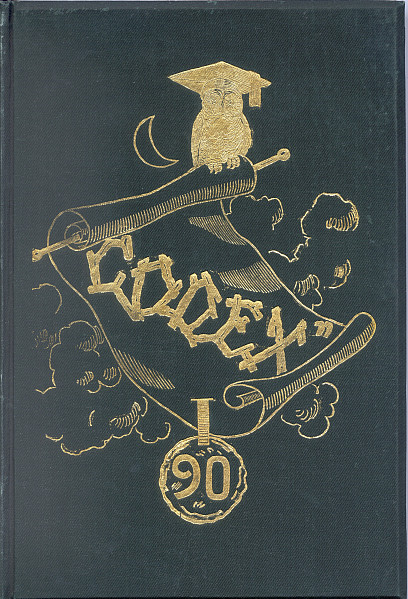
Alvin S. Wheeler was in charge of the Codex’s art department. In October he traveled to Milwaukee and met with its leading engraving house, Marr & Richards, and the publishing house, Cramer, Atkens & Cramer, to go over design and printing of the annual.
“[They] are, in themselves, a guarantee of its promised excellence, typographically,” crowed the Round Table, which soon included boosterish notices in nearly every issue. “Seventy-five cents per copy,” it promised its readers. “150 pages, 8 by 10. Heavy paper; board backs in fancy design; full of engravings, etc. A book to keep all your life time. Subscribe.”
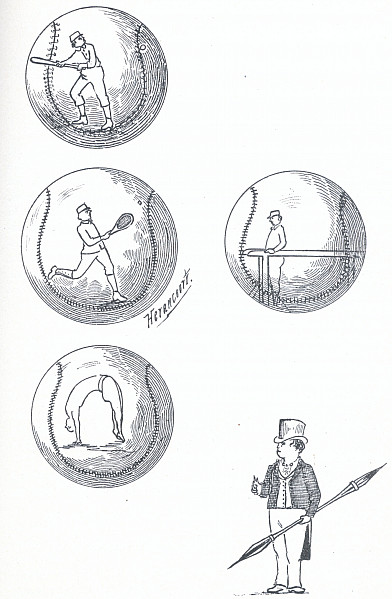
By late February of 1889, the Codex was almost ready for unveiling. The printers had finished the basic work, but were awaiting the arrival of three thousand steel engravings. Finally, after months of anticipation, the finished book appeared, bound in handsome forest green, its front cover featuring gold leaf a whimsical mortarboard-bedecked owl perched atop a scroll with the word Codex in fancy letters. The editors dedicated the volume to President Emeritus Aaron Lucius Chapin, followed by a self-deprecating forward:
“We offer the first regular Beloit College Annual Magazine, the Codex, the child of hopes, fears, and much hard work. The fact that we have traveled an untrodden way, should make all lenient in their judgment of our many shortcomings. That the book has chaff in it, we know; that it has wheat, we know…”.
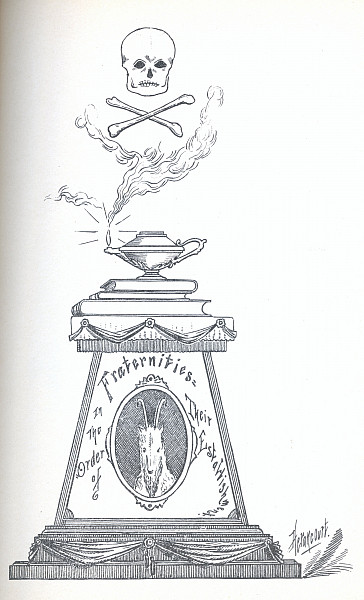
Along with information about faculty and students, the Codex included a 12-page history of the college, histories of the current classes, tributes to presidents Chapin and Eaton, lengthy write-ups on student organizations and activities, and an “alumni personal column,” providing a plethora of information about alumni activities and whereabouts. The Codex also offered gentle humor poking fun at members of the class of 1890, most of which today falls into the “you had to be there” category. For instance, a warning to a student named “J-nk-ns” referred to small-town Beloit: “When you feel like flirting on a train, be sure that the young lady does not live in Beloit. That adventure of yours is all over town.”
“A Bad Boy’s Diary” summarized the academic year with tongue planted firmly in cheek:
“March. Mumps and measles. Professors and students. No discrimination…May 11. Base-ball. Weisbrod, the great pitcher of the Northwest, twists the pig-skin. Score: Madison, 13; Beloit, 21…June 8. Field Day. Woodbridge, a Knight of the Mystic Circle, surprises people by his prodigious fee - - feats…Nov. 12. Grand ratification over Harrison election. College boys, yells, omnibuses, traction-engines, flags, roosters and fish-horns.”
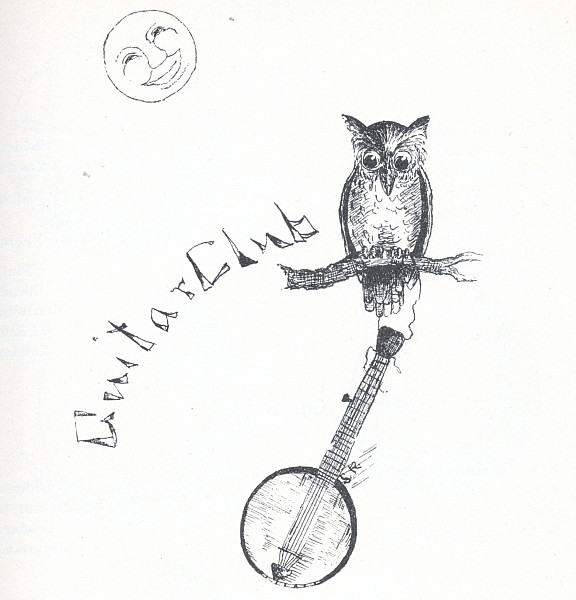
The class of 1890 Codex printed numerous comic line drawings but only a few photographs; presidents Chapin and Eaton and former Preparatory Department principal John P. Fisk, resplendent in beards, plus a page proudly showing off Middle College, the Smith Observatory, and Memorial Hall. Future yearbooks would include many more examples of outstanding student photography and artwork.
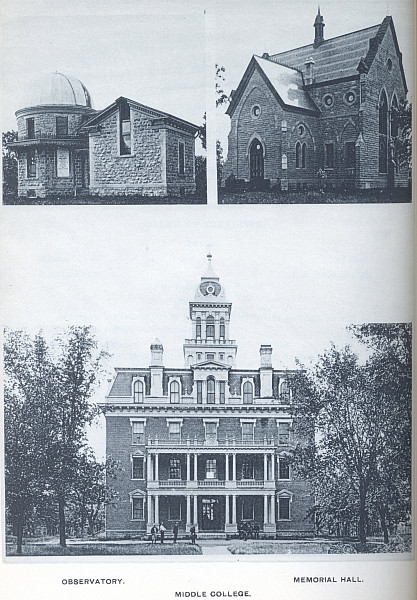
When this first experiment in publishing an annual proved successful, the Round Table expressed hope that future junior classes would make it a yearly tradition. However, the Codex and its successor the Gold appeared biennially until 1926, when it became a long-running annual through 2004. These treasures are far more than institutional repositories of ephemeral memorabilia. The Codex and Gold yearbooks offer a rich tapestry of Beloit College life, documenting its people, campus, and activities, as well as reflecting changing aesthetics and an evolving society.


